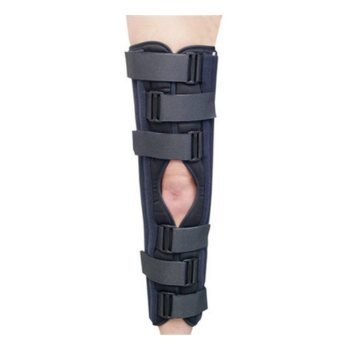If you or a loved one is facing an amputation, you are not alone - there is a supportive community here in Manitoba that can help walk with you through every step of recovery. While this journey may seem overwhelming at first, taking time to prepare for your post-surgery healing period can make a world of difference.
Whether you will be a prosthesis user or caring for someone who will be, understanding what to do (and what not to do) in the days and weeks following surgery can help prevent complications and promote better outcomes.
Here are some essentials do’s and don’ts to help you with your post surgery amputation recovery. We hope these points can help make the transition smoother for you and your loved ones.
Do: Keep Your Residuum and Prosthesis Clean
 |
Your residuum or residual limb is the remaining portion of an arm or leg after an amputation.
After your amputation surgery, your residual limb is particularly vulnerable to bumps or impact, which could result in additional trauma.
Wearing a residuum protector (also known as a zimmer splint or knee immobilizer) will help prevent further trauma to your residual limb as it acts as a cushioned shield. The residuum protector should be worn 24/7 while you are in the hospital. This constant protection will help maintain the shape of the limb, prevent accidental impact and offer a sense of security as your body adjusts during your amputation recovery. |
||||||||||||||||||||
Do: Use Tensor Bandage / Shrinker Socks
Initially you will be taught how to wrap your limb with a tensor bandage. This will start to give compression to your limb, that can be applied carefully, especially while you have sutures in your skin. Once your sutures have come out naturally or been removed, and your surgical site has started to heal, your healthcare team may recommend that you begin using shrinker socks. Shrinker socks are specially designed and made to gently compress your residual limb, helping to control swelling (edema) and shape the limb in preparation for your prosthesis.
Why is it important to control edema?
Edema control is essential during your amputation recovery period as well as after, as you navigate life with your prosthesis. For post-surgery, controlling edema not only helps to reduce pain and discomfort, but it also promotes better circulation, support the healing process and helps the limb take on a shape that will fit more comfortably in a prosthetic socket when that time comes.
Don’t: Lie with a Pillow Under Your Knee, Hip or Back
After your surgery, it might feel more comfortable to rest with a pillow tucked under your knee or hip in a bent position or to rest in a slightly bent position. However, keeping your knee or hip bent for extended periods can actually lead to muscle shortening and/or joint stiffness - conditions that you want to avoid as you heal and prepare for prosthesis use.
When you are lying down, you should lie with your knee and hip flat and extended instead. This will help maintain the natural alignment of your body and prevent contractures, which are tight and inflexible joints that can make movement with a prosthetic device more difficult or painful. Do your best to keep your knee from rolling out to the side.
If you are caring for someone during their amputation recovery period, offering gentle reminders or assisting them with proper positioning can go a long way in helping them build healthy habits early in their amputation recovery.
Do: Massage Your Residuum
After your amputation, taking time each day to gently massage your residuum can significantly help in your amputation recovery. When scar tissue becomes too tight or sticks to muscles, it can cause pain, limit movement and even interfere with the fit and function of your prosthesis.
It’s not just about relaxation - massaging your residual limb regularly promotes healthy circulation, reduces sensitivity in the area, and helps you become more familiar and comfortable with your new limb. As healing progresses, it also helps desensitise nerve endings which can reduce phantom limb sensations or pain over time.
Start slow with gentle circular motions using clean hands and mild lotion or cream. Be sure your residual limb and surrounding areas are clean and dry before and after massage.
Avoid massaging directly over open wounds or areas that feel particularly tender. Check with your healthcare team if you are unsure.
Recovering from an amputation is not just a physical journey - it is also an emotional and mental one for the patient as well as their caregiver(s). While every individual’s healing process is unique, being informed and proactive can make a big difference. By following these simple (yet important!) post-surgery tips, you are setting the foundation for a smoother and more comfortable recovery.
